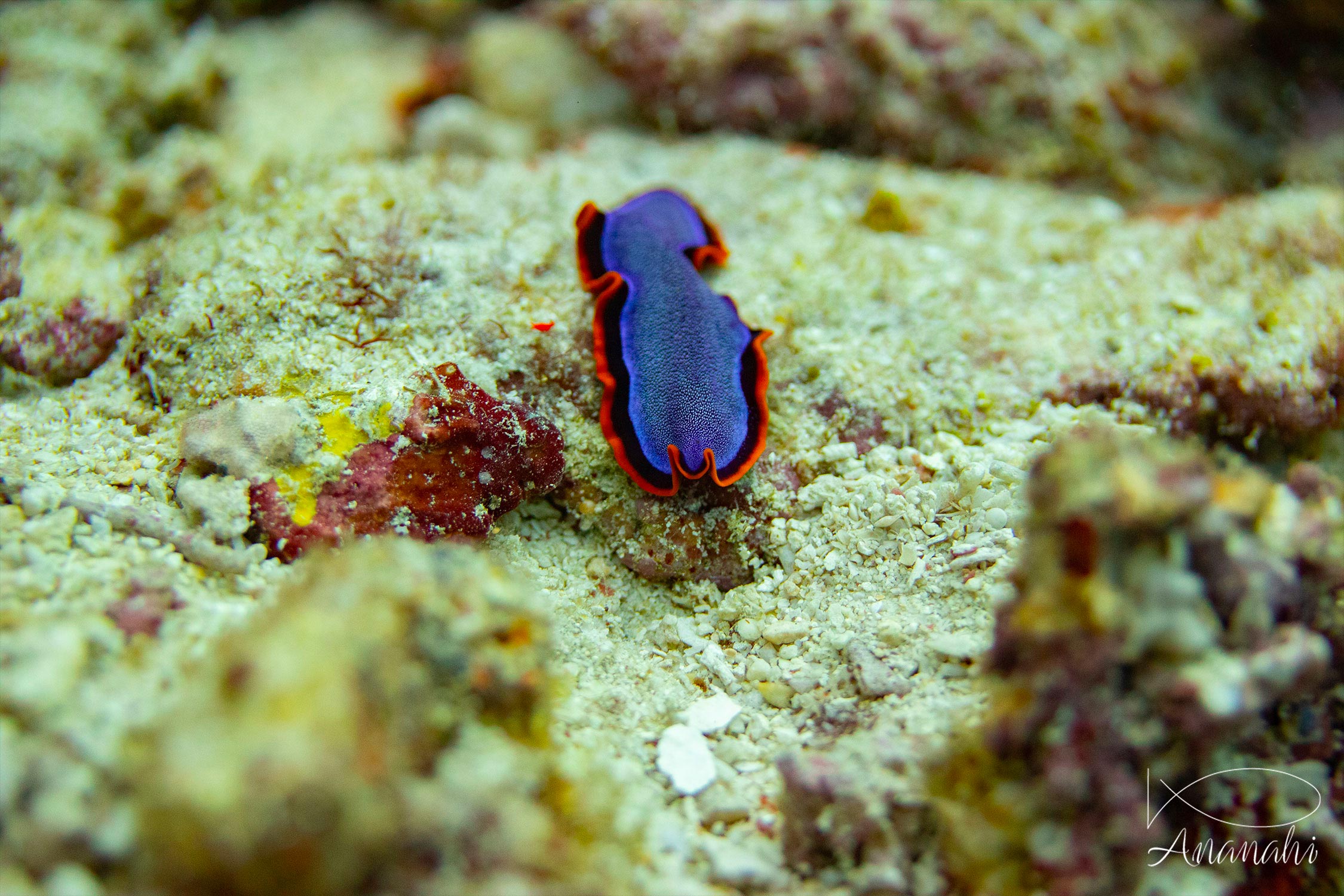
Scientific name: Pseudoceros ferrugineus
Size: About 1.8 inches
Color: Fuchsia or blue, orange and black
Distinguishing feature: Two pseudo tentacles formed by folds of the body, two bands on the periphery: orange, then very dark red. The dark red back is dotted with small white dots giving it a fuchsia color, sometimes blue.
Where did we see it: Mayotte, Raja Ampat

Scientific name: Pseudoceros ferrugineus
Size: About 1.8 inches
Color: Fuchsia or blue, orange and black
Distinguishing feature: Two pseudo tentacles formed by folds of the body, two bands on the periphery: orange, then very dark red. The dark red back is dotted with small white dots giving it a fuchsia color, sometimes blue.
Where did we see it: Mayotte, Raja Ampat
Flatworms can multiply by scissiparity: a fragment of their body can detach and develop to produce a true clone of the first.
It can not be too confused with other species, it is sometimes more fuchsia than blue, but is very different from other flatworms.
We can hear the bull shark is very dangerous because of attacks near La Réunion island.
However, tens of them are living at 600 feet from the famous beach of Playa Del Carmen in Mexico. And there are no attacks.
Mammals have a horizontal tail.
Fishes have a vertical fin.
Some sharks can stay motionless on the sand (white tips reef sharks, nurse sharks, etc.).
These sharks don't have to swim to bring oxygen to their gills like other sharks (grey, hammerheads tc.)